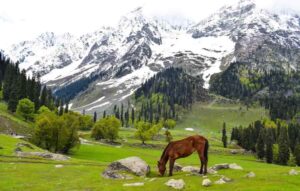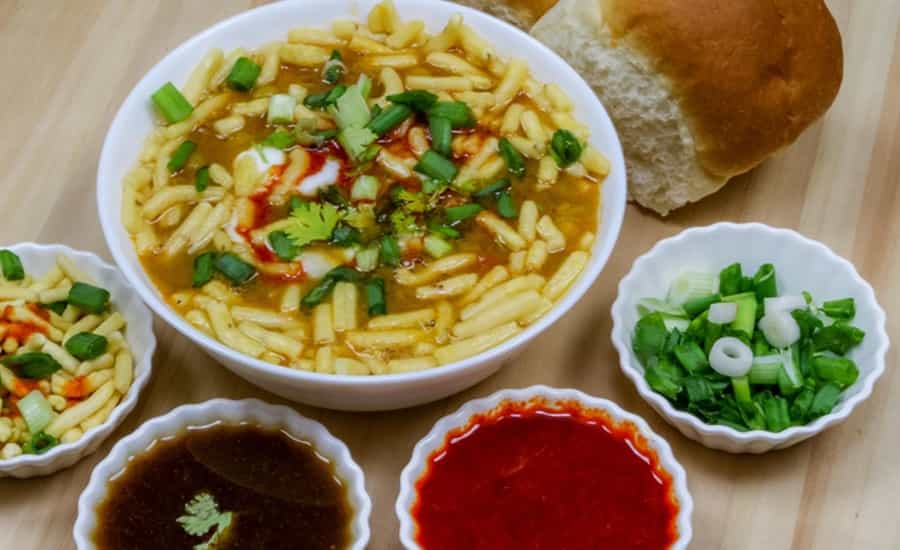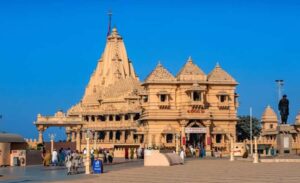Diwali – Festival of Lights
Diwali, also known as Deepavali, is one of the most significant festivals celebrated in India and by Indians worldwide. This festival of lights holds immense importance and is steeped in history and legends. In this article, we will delve into the various facets of Diwali, exploring its significance, history, and the captivating stories associated with it.
- When is Diwali in 2023: Fri, 10 Nov, 2023 – Tue, 14 Nov, 2023
Significance of Diwali
Spiritual Significance: Diwali is primarily a festival that celebrates the victory of light over darkness and good over evil. It commemorates the return of Lord Rama to his kingdom after defeating the demon king Ravana. The lighting of lamps and candles during Diwali symbolizes the inner light that dispels spiritual darkness and ignorance, signifying the triumph of righteousness and truth.

Religious Observance: Diwali is an important religious occasion for Hindus, Jains, and Sikhs. Hindus worship Goddess Lakshmi, the deity of wealth and prosperity, during Diwali. For Jains, it marks the spiritual awakening and nirvana attained by Lord Mahavira. Sikhs celebrate Diwali as Bandi Chhor Divas, marking Guru Hargobind Ji’s release from imprisonment.
Cultural Celebration: Diwali is a time when families come together to celebrate their cultural heritage. It involves cleaning and decorating homes, preparing traditional sweets and dishes, and exchanging gifts. The festival promotes family bonding and strengthens social ties.
Renewal and New Beginnings: Diwali often coincides with the end of the agricultural season and the beginning of a new one. It is a time for farmers to celebrate their harvest and seek blessings for a prosperous year ahead. In the business world, it marks the start of a new financial year, and business owners pray for success and prosperity.
Symbol of Unity: Diwali transcends religious boundaries, and it is celebrated by people of various faiths and backgrounds in India and around the world. It serves as a unifying festival that promotes harmony and understanding among diverse communities.
Charitable Acts: Diwali emphasizes the importance of charity and giving back to the community. Many people donate to the less fortunate, offer food to the needy, and participate in acts of kindness during the festival.
Environmental Awareness: In recent years, there has been a growing emphasis on celebrating an eco-friendly Diwali. People are encouraged to use eco-friendly lamps, reduce fireworks, and minimize pollution. This reflects a broader awareness of environmental concerns.
Personal Reflection: Diwali is a time for individuals to reflect on their lives, seek spiritual growth, and set new goals. It’s an opportunity to let go of past grievances and start anew with positivity and hope.

History of Diwali
Ancient Origins: The history of Diwali can be traced back to ancient India, where it originated as a harvest festival. People would celebrate the end of the agricultural season and the beginning of the new one by offering prayers to the goddess of wealth, Lakshmi, for a bountiful year ahead.
Mythological Significance: One of the most well-known legends associated with Diwali is the return of Lord Rama to his kingdom of Ayodhya after defeating the demon king Ravana. The people of Ayodhya lit oil lamps (diyas) to welcome him back and celebrate his victory, which is why Diwali is often referred to as the “Festival of Lights.”
Krishna and Narakasura: Another legend associated with Diwali is the victory of Lord Krishna over the demon Narakasura. It is believed that Lord Krishna liberated 16,000 captive princesses from Narakasura’s captivity and restored peace. This event is celebrated as Naraka Chaturdashi or Choti Diwali, which occurs a day before the main Diwali festival.
Goddess Lakshmi: Diwali is also associated with the worship of Goddess Lakshmi, the deity of wealth and prosperity. It is believed that on Diwali night, Lakshmi visits homes that are clean and well-lit, bringing wealth and blessings. Devotees perform puja (prayers) to seek her blessings for a prosperous year.
Sikh Tradition: For Sikhs, Diwali holds special significance as it marks the release of Guru Hargobind Ji, the sixth Sikh Guru, from imprisonment in the Gwalior Fort during the Mughal era. Sikhs celebrate Diwali as Bandi Chhor Divas (the day of liberation) and light lamps to commemorate this event.
Jain Celebration: Jains celebrate Diwali as well, marking Lord Mahavira’s attainment of nirvana (spiritual liberation) on this day. They light lamps and offer prayers in reverence to Lord Mahavira.
Modern Celebrations: Over the centuries, Diwali has evolved into a grand and diverse celebration that includes lighting lamps, bursting fireworks, exchanging gifts, preparing traditional sweets, and decorating homes with colorful rangoli designs. It is a time for families to come together, seek blessings, and enjoy festive meals.
Global Observance: Diwali is not limited to India; it is celebrated by millions of Hindus, Jains, Sikhs, and other communities worldwide. It has become a symbol of India’s rich cultural heritage and is often referred to as the “Festival of Lights” because of the widespread practice of lighting lamps and candles.
The Story of Diwali
The story of Diwali, also known as Deepavali, is deeply rooted in Hindu mythology and has several variations depending on the region and tradition. One of the most well-known stories associated with Diwali is the return of Lord Rama to his kingdom of Ayodhya after defeating the demon king Ravana. Here’s the story of Diwali:

The Legend of Lord Rama and Diwali
1. The Exile of Lord Rama: The story begins with Lord Rama, the seventh incarnation of Lord Vishnu, and his exile from his kingdom of Ayodhya. Rama, along with his wife Sita and his loyal brother Lakshmana, was sent into exile for 14 years as a result of a promise made by his father, King Dasharatha, to one of his wives, Kaikeyi. Rama accepted this exile willingly, and they spent their years in the forest.
2. Abduction of Sita: During their exile, the demon king Ravana, who had ten heads and immense power, abducted Sita. He took her to his kingdom of Lanka (modern-day Sri Lanka), which was situated across the sea.
3. Rama’s Quest to Rescue Sita: Rama, distraught by the abduction of his beloved wife, embarked on a perilous journey to rescue her. Along the way, he received assistance from various allies, including the monkey god Hanuman and an army of monkeys.
4. Battle with Ravana: After a long and fierce battle with Ravana and his demon forces, Rama ultimately defeated the demon king with the help of his divine bow and arrow. Ravana was killed, and Sita was rescued.
5. Return to Ayodhya: Rama, Sita, and Lakshmana, along with Hanuman and their loyal followers, returned to Ayodhya after 14 years in exile. Their return marked a joyous and triumphant occasion for the people of Ayodhya.
6. The Festival of Lights: To welcome Lord Rama’s return and to celebrate his victory over evil, the people of Ayodhya illuminated the entire city with oil lamps, diyas, and candles. The city was bathed in a warm and radiant glow, symbolizing the triumph of light over darkness, good over evil.
7. Diwali Traditions: The tradition of lighting lamps, bursting fireworks, exchanging gifts, and decorating homes with colorful rangoli patterns continues to this day. Diwali has become a symbol of hope, prosperity, and the victory of righteousness.
8. Symbolism: The story of Rama’s return and the lighting of lamps during Diwali represent the inner light that dispels spiritual darkness and ignorance. It signifies the importance of truth, righteousness, and the ultimate victory of good over evil.
Diwali Traditions and Celebrations
Diwali is celebrated over five days, each with its own unique rituals and significance:

Day 1 – Dhanteras: This marks the beginning of Diwali festivities. People clean and decorate their homes, and many purchase gold or silver items, believing it brings prosperity. It is also a time to worship the goddess Lakshmi, the goddess of wealth.
Day 2 – Naraka Chaturdashi (Choti Diwali): According to legend, Lord Krishna defeated the demon Narakasura on this day, symbolizing the triumph of good over evil. People take oil baths and light lamps to dispel darkness.
Day 3 – Diwali: This is the main day of celebration. Families gather to light lamps, offer prayers to deities, and exchange gifts and sweets. Fireworks and colorful rangoli (decorative patterns) adorn the streets and homes. Temples and houses are illuminated with a dazzling array of lights.
Day 4 – Govardhan Puja and Annakut: In some regions, this day is dedicated to Lord Krishna’s lifting of the Govardhan Hill to protect the villagers from torrential rains. Devotees prepare a variety of food offerings and build elaborate mounts of food, known as Annakut, as an offering to the gods.
Day 5 – Bhai Dooj: The final day celebrates the bond between brothers and sisters. Sisters perform aarti (ritual prayer) for their brothers and apply tilak (vermilion) on their foreheads. In return, brothers offer gifts and promise to protect their sisters.
Throughout the Diwali celebrations, families prepare delicious feasts with an assortment of sweets and savory dishes. Traditional Diwali sweets like ladoos, jalebis, and barfis are exchanged among friends and family. The exchange of gifts and greetings adds to the festive spirit, fostering love and togetherness.
Diwali Beyond India
Diwali’s significance and charm have spread far beyond the borders of India, finding resonance in diverse cultures and regions:
South Asia: Diwali is celebrated with great enthusiasm in neighboring countries like Nepal, Sri Lanka, and Bangladesh. The traditions may vary, but the central themes of light, family, and spirituality remain consistent.
Southeast Asia: In countries like Malaysia, Singapore, and Indonesia, where there are significant Indian diaspora communities, Diwali is celebrated as Deepavali. The festivities include the lighting of oil lamps, cultural performances, and vibrant processions.
United Kingdom: Diwali is one of the most prominent religious festivals for the British Indian community. The city of Leicester, in particular, hosts one of the largest Diwali celebrations outside of India, featuring grand parades and illuminations.
United States and Canada: Diwali has gained recognition and popularity among the Indian diaspora in North America. Various cities, including New York, Los Angeles, and Toronto, organize public Diwali events, attracting people from diverse backgrounds.
Australia: Diwali is celebrated with fervor in Australian cities like Sydney and Melbourne, where cultural events, fireworks displays, and traditional dances showcase India’s rich heritage.
Africa: Diwali is celebrated in several African nations, particularly by the Indian communities in countries like South Africa, Mauritius, and Kenya. It is marked by lighting lamps, exchanging sweets, and family gatherings.
Caribbean: Diwali is observed in Trinidad and Tobago, Guyana, and other Caribbean nations with significant Indo-Caribbean populations. The celebrations often include cultural performances, feasts, and lighting of deyas (lamps).
Frequently Asked Questions (FAQs)
Q-1: Why is Diwali known as the Festival of Lights?
Ans: Diwali is called the Festival of Lights because people illuminate their homes and surroundings with lamps and candles to symbolize the victory of light over darkness.
Q-2: How long is the Diwali festival celebrated?
Ans: Diwali typically spans five days, with each day holding its unique significance and rituals.
Q-3: What are some traditional Diwali sweets and snacks?
Ans: Traditional Diwali treats include ladoos, jalebis, and an assortment of savory snacks like samosas and namkeens.
Q-4: Is gift-giving a part of Diwali celebrations?
Ans: Yes, exchanging gifts is a common tradition during Diwali. It symbolizes goodwill, love, and the sharing of blessings.
Q-5: How do people decorate their homes for Diwali?
Ans: Homes are decorated with colorful rangoli (artistic patterns made with colored powders), flowers, and a variety of lamps and lanterns to create a festive ambiance.
Q-6: When is Diwali Puja in 2023?
In 2023, Diwali will be celebrated on November 12th throughout the country. The auspicious time for Lakshmi Puja falls between 06:11 PM and 08:15 PM. The Amavasya tithi commences at 02:44 PM on November 12, 2023, and concludes at 02:56 PM on November 13, 2023.








